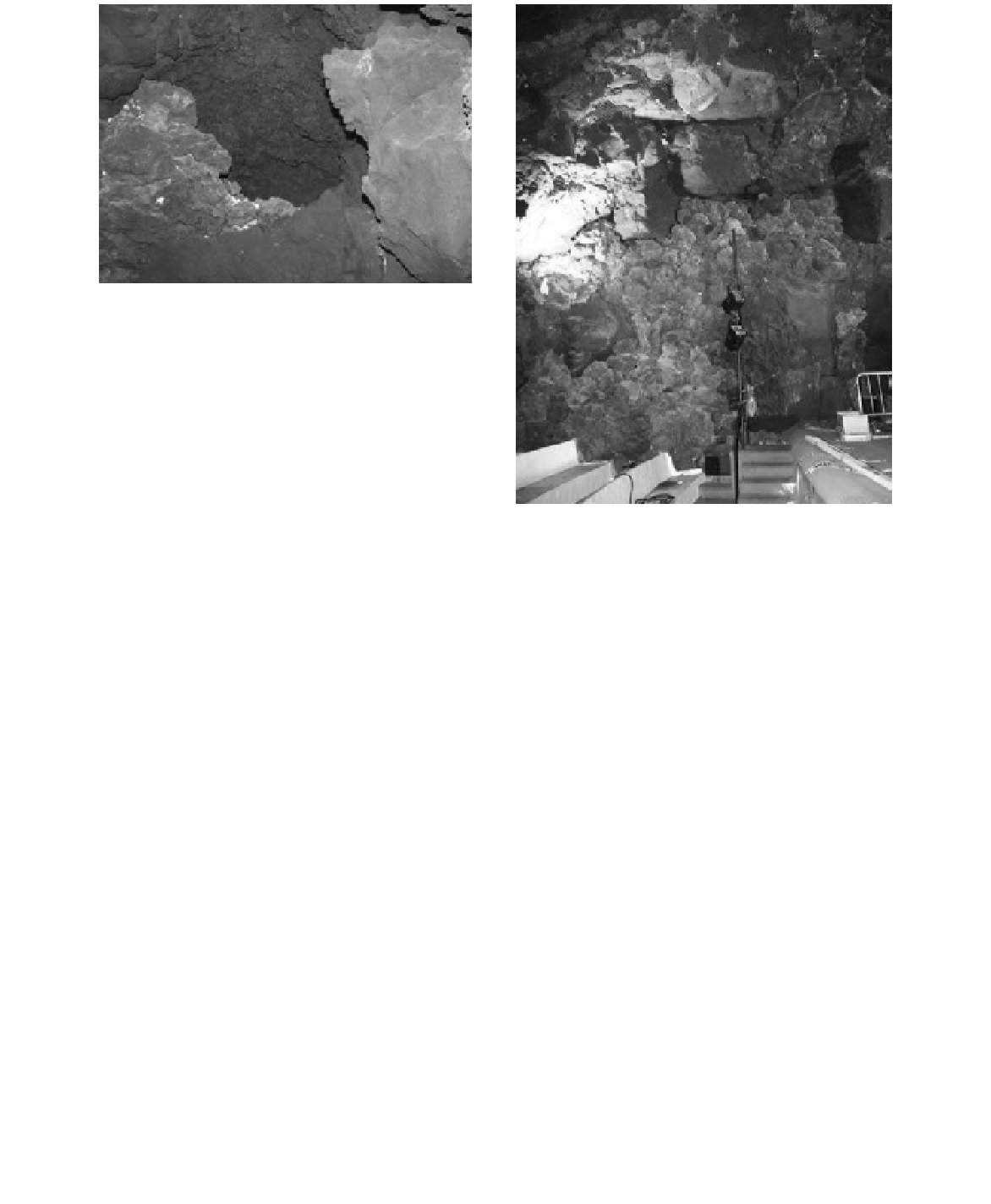Environmental Engineering Reference
In-Depth Information
elements, individual, with a variable size amongst
which there are types such as sand, grit, gravel,
coarse gravel or similar (which is generally referred
to in civil works as “chineo”).
as a general rule it can be affirmed that these
types of detachments bear no relation to the struc-
tural stress of the cavern. They can occur at any
point of its surface as the result of the individuali-
sation of a fragment of rock or due to the loss of
cohesion or the reduced resistance of some of the
discontinuities or in the actual matrix of which it is
comprised as a result of the alteration.
in this sense superficial-type treatments studied
focused on consolidating the first centimeters of
the material by increasing its cohesion and reduc-
ing the susceptibility of the material to erosion.
at the same time the treatment enabled the rock
to continue being permeable, it “transpires” thus,
more importantly and as a compulsory measure,
its visual effect must be as invisible as possible or,
in the event of being detected, be more concealed,
blending into the area to which it is applied.
3.6
Anthropic actions
During the period that the auditorium was in open
to the public various anthropic actions were under-
taken directed at minimising minor instability, or
to cover small gaps which had been appearing
throughout the entire area of the complex.
These actions essentially consisted in fitting
strips of stone, at times using materials from the
area, (dark in colour) and at other times using
light-coloured stone which affected the aesthetics
of the surroundings. These last actions were more
visually obvious given that they were emphasised
due to their comparison with the rest of the walls
as a result of the different colouring.
at times behind some of these strips mortar had
been used for filling the gaps behind them. neither
the composition of these mortar fillings nor the
depth they had reached could be accurately assessed.
it must be emphasised at times that these strips
did not correspond as much with the attempt to fill
and conceal gaps, but rather with the attempt to
underpin areas with insufficient support and with
the objective of concealing existing installations.
examples of this are cases of numerous cables and
recesses for lights in the auditorium as well as for
sound equipment.
Within this context it is worth highlighting the
existence of a triple torsion protective mesh which
was located in the area closest to the stage. This
mesh extended from the keystone up to the side-
walls and the fixtures were clearly visible due to
their galvanising.















